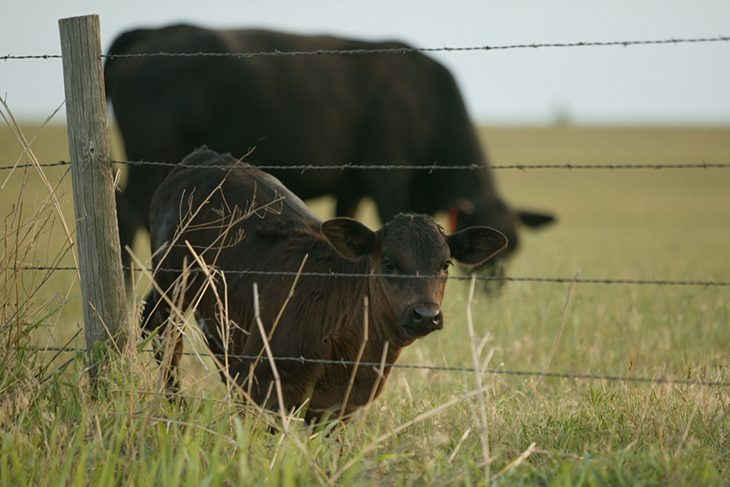
Starting early in the day a key to properly handling cattle in hot weather
Monday, June 4, 2018
Cow-calf producers need to remember the golden rule when it comes to handling cattle in hot weather: Start early, get most of the work done by 8 a.m. if possible and by 10 a.m. at the latest.
Glenn Selk, Oklahoma State University Cooperative Extension emeritus animal scientist and managing editor of the popular OSU Cow Calf Corner newsletter, reminds producers that cattle research conducted at OSU and other institutions have clearly shown clock management is not just for sports.
“Producers who are currently engaged in artificial insemination as a method of breeding cows and heifers especially need to keep in mind the negative effect handling cattle in summer temperatures and humidity can have on reproductive success,” he said.
OSU animal science research conducted in the 1980s found cattle that were heat stressed shortly after breeding had substantially higher embryo loss than cattle left in more pleasant environments.
“In those experiments, the average core body temperature of the heat-stressed cows was increased by a mere 1.6 degrees Fahrenheit,” Selk said. “It doesn’t take much. Rough handling of excitable cattle in hot weather can further impact body temperature and therefore reproductive performance.”
In addition, research conducted by the University of Nebraska’s Terry Mader showcased that moving yearling cattle just a small distance – 2,000 feet – during mild summer temperatures – 80 degrees Fahrenheit – could change the core body temperature by as much as 1.4 degrees Fahrenheit. Mader’s research indicates the ease with which the body temperatures of excited, stressed cattle being worked in hotter temperatures can rise to levels devastating for a breeding program.
“While it may seem to make sense to work cattle near sundown, cows and heifers may need at least six hours of nighttime cooling before their bodies dissipate enough heat to cool down from an extremely hot day,” Selk said.
Bottom line: Get up early and get to work to maximize animal well-being.
Cattle that must be handled during hot weather should spend less than 30 minutes in the working facility, according to OSU animal science recommendations. Selk reminds producers that drylot pens and corrals loaded with cattle will have very little if any air movement.
“Animals will gain heat constantly while they are in these areas,” he said. “The time limit of 30 minutes in the confined cattle-working area should limit the heat gain and therefore the heat stress. Work efficiently but do not create unnecessary stress in the animals by hurrying.”
Also, producers should make every effort to provide cool, fresh water to cattle that are in close confined areas for any length of time. During hot weather, tightly confined cattle may drink more than 1 percent of their body weight per hour.
“Producers need to periodically check that water supply lines are keeping up with demand when working cattle during hot weather,” Selk said. “Equally important, anyone working cattle in hot temperatures needs to make sure he or she stays hydrated as well.”
Oklahoma is the nation’s fifth-leading producer of cattle and calves, and third-leading producer of beef cows, according to USDA National Agricultural Statistics Service data.
The Oklahoma Cooperative Extension Service is one of two state agencies administered by OSU’s Division of Agricultural Sciences and Natural Resources, and is a key part of the university’s state and federally mandated teaching, research and Extension land-grant mission.
